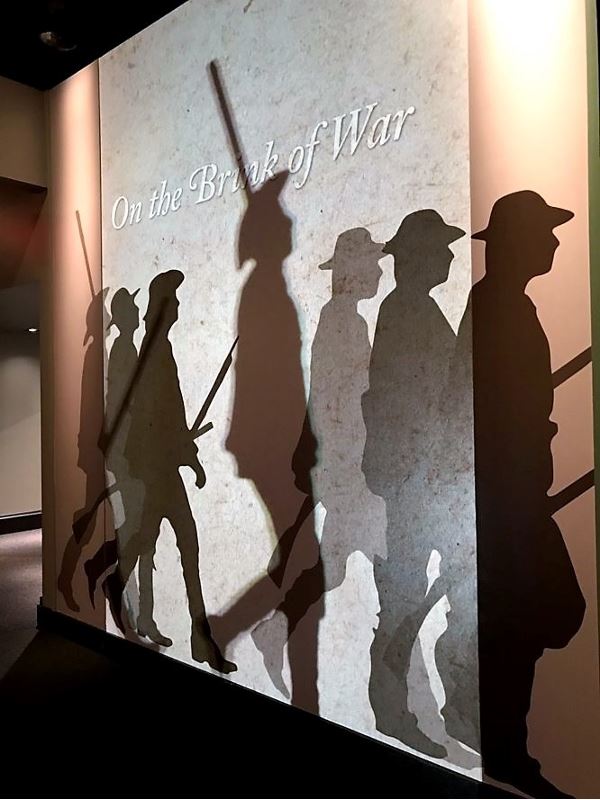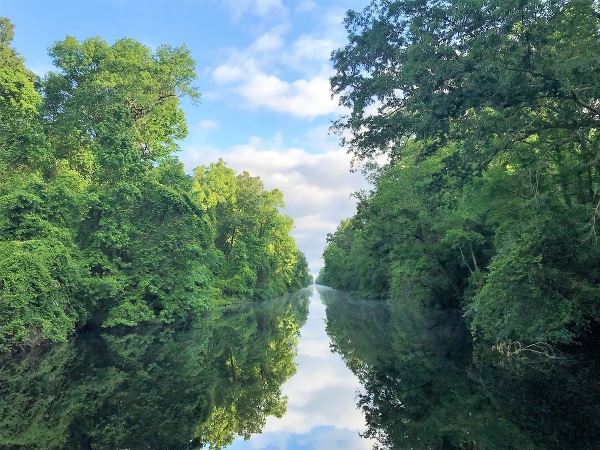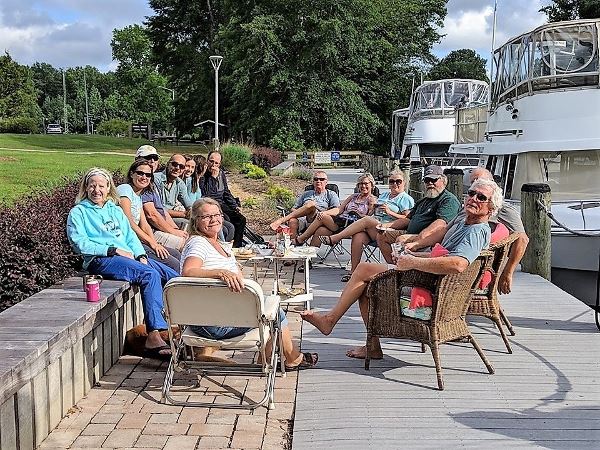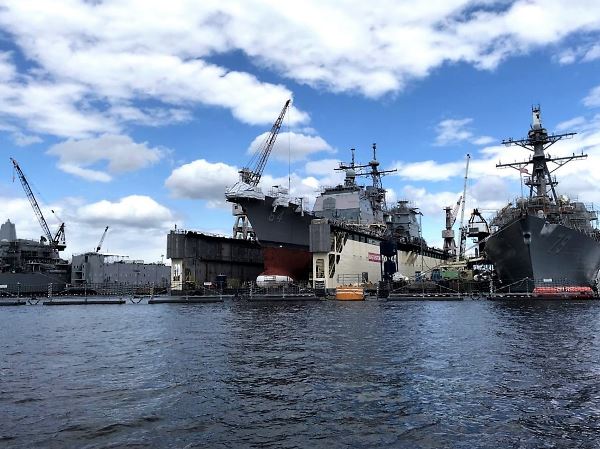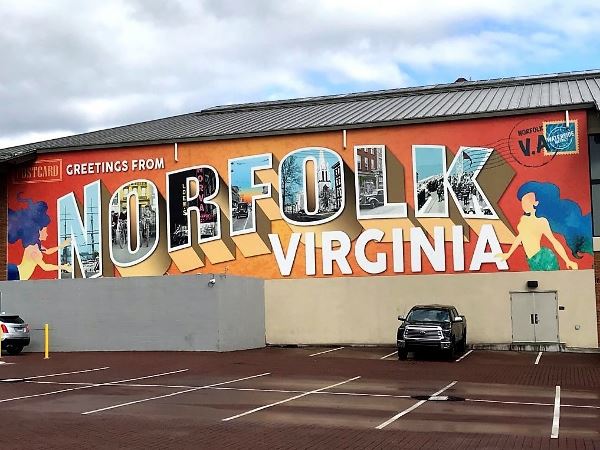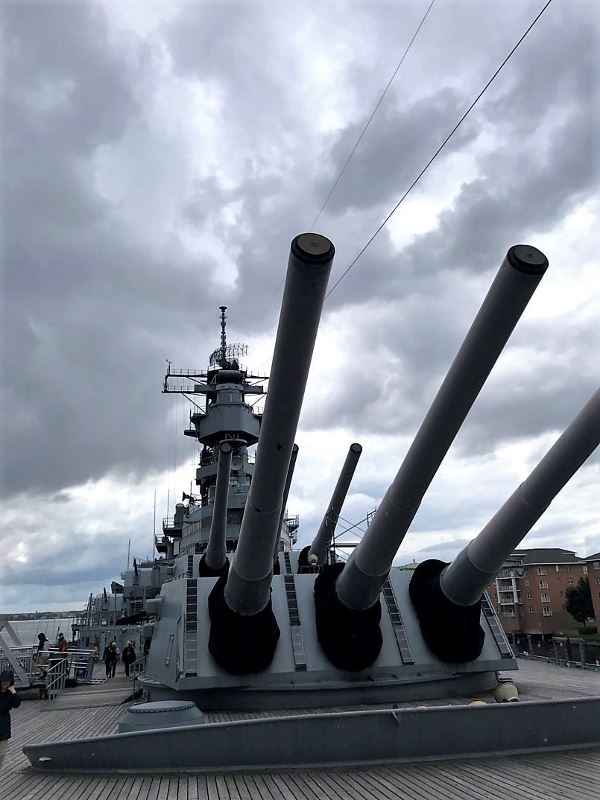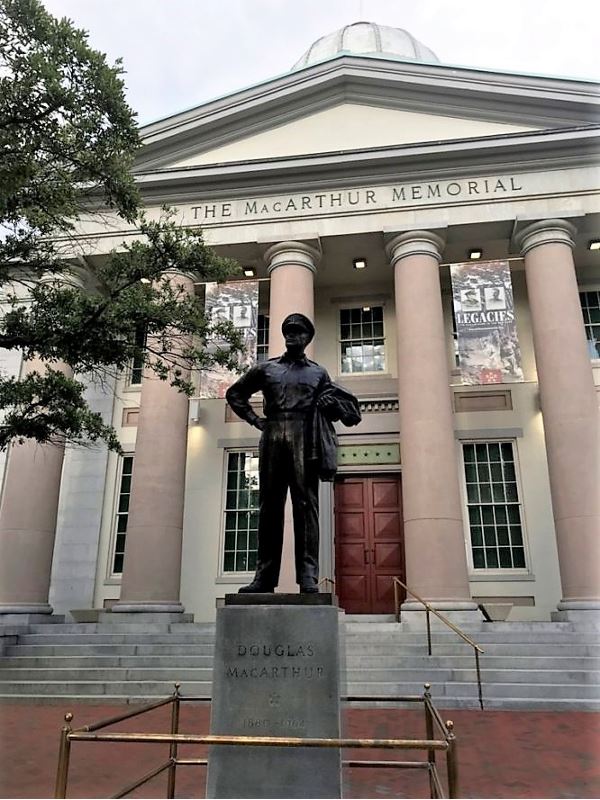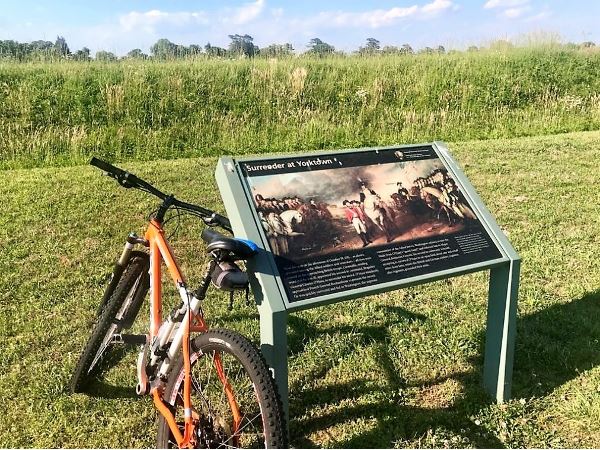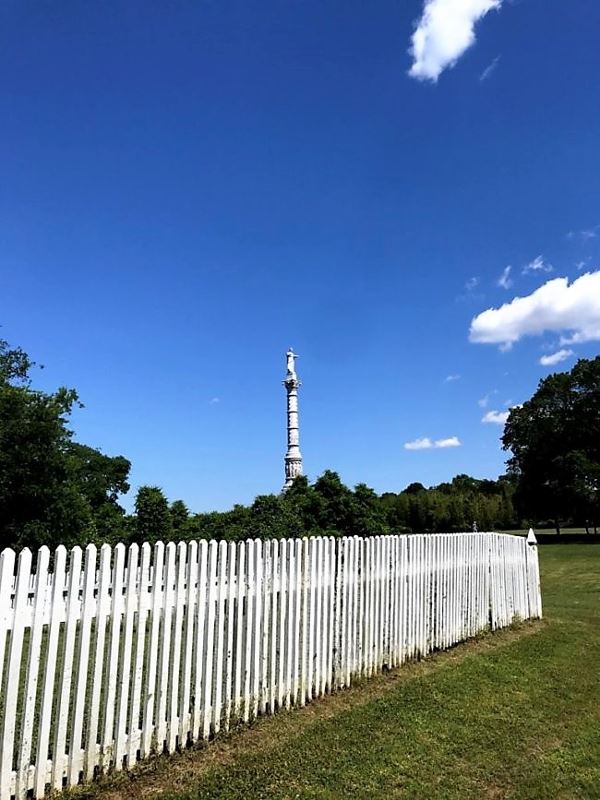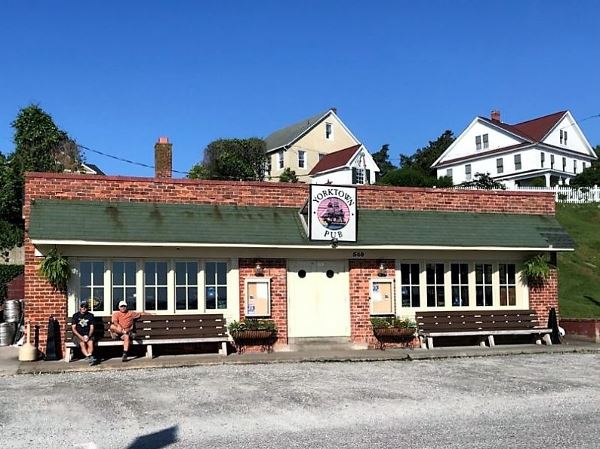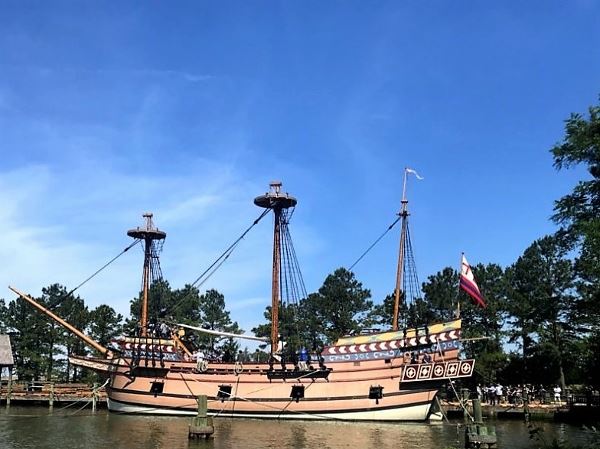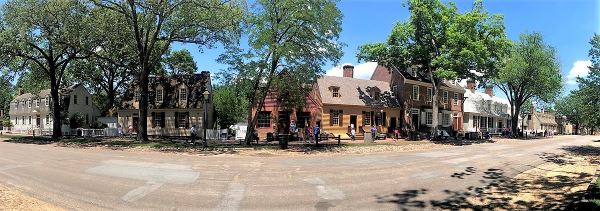Another new state already!
Random Facts: Virginia
1. Eight United States Presidents were born in Virginia: George Washington, Thomas Jefferson, James Madison, James Monroe, William Harrison, John Tyler, Zachary Taylor, and Woodrow Wilson.
2. Seven Presidents are buried in Virginia: Washington, Jefferson, Madison, Monroe, Tyler, Taft and Kennedy.
3. In Virginia more people work for the United States government than any other industry. About 1/4 of Virginia’s workers.
We had an uneventful crossing of the Albemarle Sound in order to get back to the AICW and our next stop in Elizabeth City. There are several free dock options in Elizabeth City. Yes – free docks! There is a 48 hour maximum stay which was fine for us and Alysana as we were looking to stay put for an extra day while the predicted wind and rain passed by.
Elizabeth City was founded in 1794, prospered with the Dismal Swamp Canal construction and is currently home to the largest Coast Guard base in the US. We spent our first afternoon seeing the Museum of the Albemarle which included over 400 artifacts which showcase the people and historical events of the area. It was done very well and was free. Free dock, free museum … we were starting to like this town. Our second day was a bit more low key as rain kept threatening but never quite ruined our day. The guys each got in their daily walks, Gina and I logged a run, we all had brunch on Alysana, we followed brunch with an afternoon beer at the local brewery, Kent watched the Blazers playoff game, we all had dinner on Heartbeat and then Kent and I watched one of the last few episodes of Game of Thrones. It was a Sunday and we treated it like a Sunday should be treated.
The next day we started our last stretch of the AICW – the Dismal Swamp Canal. The Dismal Swamp Canal opened in 1805 and is the oldest continually operating man-made canal in the United States. It connects the Albemarle Sound and the Chesapeake Bay.
Video of locking up in the Dismal Swamp. The last time we had been in a lock was in December (while in Alabama). This lock is a lot shorter than those on the river system but we finally remembered to set up the GoPro to show the process.
The Dismal Swamp Canal dropped us into Norfolk, VA which is mile 0 of the AICW. We started at mile 996 in Fort Pierce, FL. In our minds we have completed another “section” of The Great Loop!
We tied up to a marina in downtown Norfolk for the night as we were needing to fill our water tank and do some laundry. We crammed in some close by tourist activities with John & Gina and set off the next day. There is no sitting around relaxing, there is simply too much to see and do so we pick the places carefully that we spend more than one night in.
While the AICW offered very good protection from the ocean we are now about to travel the Chesapeake Bay which should be treated with the upmost respect. The Chesapeake is approximately 30 miles wide, 200 miles long and has an average depth of just 21 ft. We will need to watch the weather for good sea conditions and plan our travel around tides & currents as things can get nasty. Fortunately our first day on the Chesapeake was kind, we logged 40 miles on our way to Yorktown.
We spent 2 nights in Yorktown at the waterfront marina in order to explore the historic triangle – Yorktown, Jamestown and Williamsburg. We were able to cram in a lot of sightseeing in each of these places, aided by the fact that with living history museums you can learn not only through galleries and films but also through re-creations and costumed historical interpreters. It is all done very well and is engaging for all ages, so engaging we failed to take very many pictures. Scratched only the surface at these three places and left with our minds blown.
Quick history refresher:
Yorktown – Established by Virginia’s colonial government in 1691 to regulate trade and to collect taxes on both imports and exports for Great Britain. Yorktown Battlefield is where George Washington secured America’s independence in 1781.
Jamestown – America’s first permanent English colony in North America (founded 1607).
Williamsburg – Capital of the Virginia Colony from 1699 to 1780.
We feel we have kept true to one of our goals for The Great Loop – seeing and learning more about our country’s history. The east coast has certainly delivered more than we had expected and while we often feel we could spend more time in an area there is always excitement for what the next stop will bring. That being said, over the next few days we will take time to head away from the Chesapeake and transit the 100 miles up the Potomac River for a visit to our nation’s capital – Washington DC.
